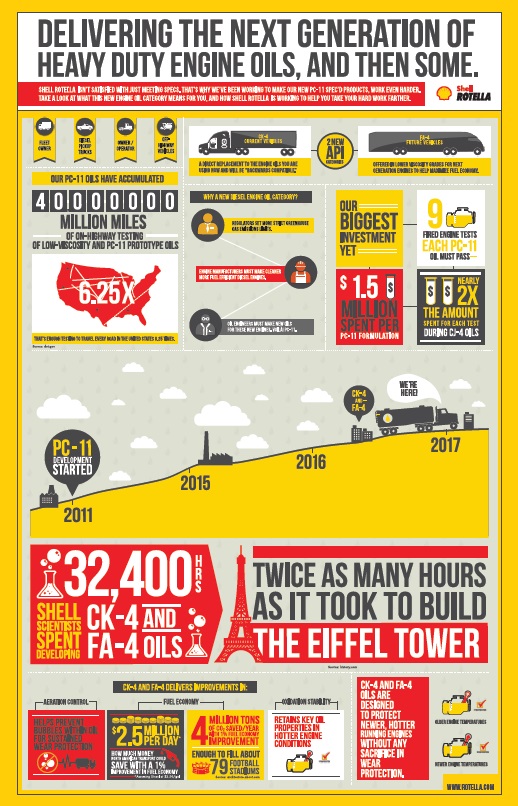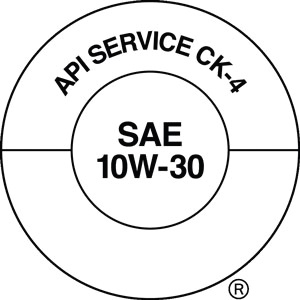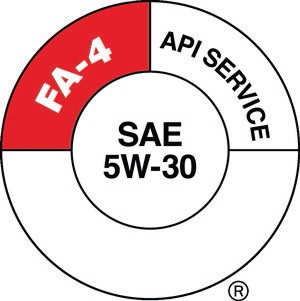PC-11 targets the oils that support tomorrow’s engines
Jeanna Van Rensselar, Senior Feature Writer | TLT Feature Article October 2017
How oil formulators, engine manufacturers, distributors and end-users will adapt.

© Can Stock Photo / Apriori
KEY CONCEPTS
•
API introduced two new PC-11 engine oils last December, API CK-4 and API FA-4.
•
The rollout has been relatively event free, but OEMs and fleet owners are taking a cautious approach.
•
Experts expect wide-scale adoption by 2022.
OIL FORMULATORS AND ENGINE MANUFACTURERS developed a new standard for engine oils that will support engine changes designed to meet greenhouse gas (GHG) and fuel efficiency standards mandated by the U.S. In order to support the new engines needed to support the standard, new oils need to offer improvements in oxidation stability, aeration performance, shear stability and adhesive wear. The new lubes also must protect against higher operating temperatures; 2017 engines run 5-15 degrees hotter than previous engines (
1).
The need for PC-11 was driven by:
•
Proposed U.S. regulations on fuel economy and CO
2 emissions
•
Increasing biodiesel use
•
The need for improved protection from higher engine temperatures
•
The need for improved shear stability
•
The need for adhesive wear protection
•
The need to reduce or eliminate engine oil aeration (
2).
The API CJ-4 oil specification has been in effect since October 2006. The replacement, PC-11, was split into two categories, PC-11-A and PC-11-B, now called API CK-4 and API FA-4, respectively.
The main difference between API FA-4 and API CK-4 is the level of high-temperature high-shear (HTHS) viscosity. API FA-4, which is designed for newer on-highway diesel vehicles, has a slightly lower HTHS, which improves fuel economy. API CK-4 is backward compatible but still offers increased performance and protection over API CJ-4.
American Petroleum Institute (API) issued final approval in January 2016, and the first licensing of these oils was Dec. 1, 2016.
CATEGORIES EXPLAINED
Traditionally, when a new engine oil category is introduced it is backward compatible to all applicable existing oils. But with PC-11, increasingly stringent environmental regulations have created a sharp divide between engines and the oil required for optimum performance (
see Figure 1).
 Figure 1. PC-11 infographic. (Figure courtesy of Shell Rotella®.)
API CK-4 (PC-11-A)
Figure 1. PC-11 infographic. (Figure courtesy of Shell Rotella®.)
API CK-4 (PC-11-A)
API CK-4 oils are direct replacements for oils currently in use and will be available in the same viscosity grades as the current API CJ-4 oils (
see Figure 2). In addition, they are backward compatible to all existing vehicles. API CK-4 oils have a HTHS viscosity of at least 3.5 cPa and are available in the same viscosity grades and oil types (conventional, full synthetic, synthetic blend). They are a direct replacement for API CJ-4 oils currently in use. API CK-4 oils have a minimum HTHS viscosity of 3.5 cPa and cover SAE 30 and 40 viscosity grades.
 Figure 2. New API CK-4 donut.
API FA-4 (PC-11-B)
Figure 2. New API CK-4 donut.
API FA-4 (PC-11-B)
The API FA-4 oils are offered in lower viscosity grades and are geared toward the next generation of diesel engines—maximizing fuel economy without sacrificing engine protection (
see Figure 3). Any backward compatibility of API FA-4 oils is dependent on the OEM because some older engines cannot operate with lower viscosity grades. These oils have a minimum HTHS viscosity range of 2.9-3.2 cPa, which will lead to better fuel economy.
 Figure 3. New API FA-4 donut.
Figure 3. New API FA-4 donut.
The API FA-4 specification is performance based. While there is no API requirement for API FA-4 to be synthetic, in order to achieve performance there will probably be some synthetic content.
Leonard J. Badal, Jr., CMRP, CLS, OMA, MLT, MLA, senior industry consultant and former Chevron Global Delo brand manager, says, “There has been significant engine bench testing and real-world field testing conducted by major additive companies, oil majors, specific on-road truck OEMs and also trucking fleets on API FA-4 oils to test both durability and fuel efficiency benefits versus conventional API CJ-4 products. Directionally, the results have shown incremental fuel efficiency benefits but also very good diesel engine protection extending back to most EPA ’10 model engines. This is important since engine durability is a critical hurdle for adoption of these thin film types of products over time.”
BENEFITS
Both API CK-4 and API FA-4 oils will deliver superior performance over the current API CJ-4 category. The many benefits include:
•
Improved oxidation stability. Oxidation, one of the main causes of oil breakdown, is accelerated by higher operating temperatures. Oxidation causes oil to thicken and form deposits. With newer engines running hotter, this improved oxidation stability is a key for extending drain intervals and long engine life.
•
Enhanced shear stability. These oils resist viscosity reduction under severe stress and lead to enhanced engine protection.
•
Better fuel economy. Lower HTHS (thin viscosity film) helps reduce fluid friction and supports improved fuel savings.
•
Reduced piston deposits. Piston deposits cause more oil to be consumed, which requires more make-up oil between changes. As engine oil is consumed it can accumulate in the emission control system and cause problems for the diesel particulate filter.
With all of these benefits, it is important to note that PC-11 won’t compromise performance to meet emissions and fuel economy standards.
SOME PERSPECTIVES
There are three concerns that are common to formulators, distributors, fleet owners and end-users:
1.
Additional cost
2.
Storage capacity
3.
Label confusion.
Formulators
For formulators and their customers, a major concern is storage capacity. Mark Petraroia, technical product market manager, TOTAL Specialties USA, says, “I believe the issue the industry will face with having the two different specifications (API CK-4 and API FA-4) will be maintaining the stock of each one. API CK-4 is fully backward compatible with all older vehicles and newer model year vehicles, while API FA-4 can only be used in the newest-model-year trucks. Depending on the size and age of the fleet, end-users might have to carry two different oils in their shops. As we move forward and have newer trucks on the road, you will see more of the API FA-4 product being used, but in the beginning almost all product being sold will be API CK-4.”
Distributors
The new oils allow distributors to further differentiate their offerings. Along with that benefit comes the imperative to educate fleet owners, managers and end-users. Distributors will be most affected by storage-capacity issues and the requirement to stock and have available API CJ-4 products until they are generally no longer in use.
Sales manager, Ocean State Oil, Division of Total Energy Lou Boschetti, says, “As API FA-4 becomes more popular, inventory storage in our facility and at our customers’ facilities will be affected. We are in a constant search for more bulk storage tanks to add to our tank farm as we expand operations. We will have to have at least four new storage tanks if we are to stock API FA-4 oils for the brands we now carry.”
Boschetti continues, “We can get by on a temporary basis using totes for bulk storage, but once these oils become more widely accepted the need for permanent tanks will arise. It is the same thing for our customers who may only have a few trucks requiring these oils at first. We can start supplying them with cases, pails and drums initially, but eventually we will have to transition larger volume users to bulk. We will then have to loan them additional bulk tanks, pumps, reels and control handles, which will require a good amount of investment by our company.”
Boschetti adds that Ocean State is seeing slow acceptance with some OEMs such as Ford, which has yet to give its complete blessing on the API CK-4 oils. “We are still seeing some of the oil manufacturers selling API CJ-4 oils until there is complete acceptance by all OEMs and because they fear losing market share in fleets with older trucks,” he says.
Fleet Owners
For fleet owners, the new oils will offer improved fuel economy and durability for both older and newer diesel engines and can continue to provide these benefits over drain intervals that are extended 10,000 miles or more. This will reduce vehicle downtime and maintenance costs. Caveats are cost and the mindset that longer drain intervals may lead to less frequent preventative maintenance. To head off the issue, fleet owners can use an alternate benchmark for preventative maintenance, such as tire inspection.
“There is a possible issue with the unintended mixing of API CK-4 spec oils and API FA-4 spec oils in fleets that are required to have both on hand,” Boschetti says. “That could result in engine damage and open up a real can of worms. We will make every effort to educate customers so they can keep this from happening, but it may happen somewhere along the way.”
End-users
The API tried to make things as foolproof for end-users as possible. For instance, the “F” in API FA-4 has no meaning. Rather, the API committee opted for a designation that didn’t sound like “C” in order to reduce complications with phone ordering.
Stocking two different oils—one not backward compatible with older engines—may create further complications for fleet maintenance, Exxon Mobil’s Randy Edwards explains (
3).
•
Using two PC-11 blends will require two separate oil storage and dispensing systems, increasing maintenance costs.
•
The risk of cross-contaminating engines with the improper oil blend becomes an issue.
•
Warranty claim denials may result if cross-contamination occurs.
•
Older engine failures may increase if they are filled with the wrong oil blend.
API developed two obviously different Service Symbol Donuts so end-users can easily distinguish between the two categories and avoid using the wrong product. The API FA-4 donut has a red shaded section, while API CK-4 does not. The API CK-4 donut will look the same as the current API CJ-4 donut.
EDUCATION
Formulators, distributors and fleet owners are educating their channel partners and maintenance staffs on the benefits and correct use of PC-11 oils. Badal says, “A number of the major oil companies are still communicating the changes via digital advertising, Website information and testimonials, industry articles and face-to-face training to both distributor channels and also end-customers. The focus is on the improved formulating performance of the engine oils along with the opportunity to move toward more fuel efficient HDEO as part of API FA-4 xW-30 oils.”
Badal adds, “The transition to both API CK-4 and API FA-4 has been progressing well for the industry with significant areas of communication and education available to all of those who want to understand the changes and impact to their engines and equipment.”
At Ocean State, Boschetti says the sales force has undergone extensive training through primary vendor Chevron, which covered the reasons for the spec change, the need for multiple diesel engine oil categories as well as the changes within their product lineup. This training started about a year prior to the licensing of API CK-4 and API FA-4. In addition, other vendors have provided training on the diesel engine category upgrade to the Ocean State sales team. All of the training was performed in house by vendors’ representatives and technical trainers.
Boschetti explains, “We launched a series of dinner events entitled Fleet Trends that took place around an entertaining and fun event designed to draw customers who would be interested in learning about the latest trends in lubrication and fuels in our industry. We started doing these events a few years back and really ramped it up when PC-11 came along and finally became officially licensed. We utilized both a Chevron trainer and our own in-house expert, Shawn McCarthy, who is a senior member of our sales team and holds STLE’s Certified Lubrication Specialist™ (CLS) certification.”
Boschetti continues, “Our reasoning was that the lubrication industry is full of complicated products and specifications that need explaining to our customers, so why not invite them to a nice dinner with a sporting event like Big East basketball or Pro MMA fighting as the hook to get them to come. It worked for us. All of our customers had a good time and learned something important related to their fleet operations while attending the event. You definitely aren’t going to draw many people to come hear a talk about motor oil, so you have to throw in something fun to get them to come listen to what you have to say.”
Leading up to the launch of the new API CK-4/API FA-4 specifications, TOTAL Specialties created a Web page that addressed all of the necessary information concerning the new specifications. The Web page included a timeline of the launch and specification requirements for the two different categories. Petraroia explains, “We also provided onsite training to our customers, upon request, to educate them on the differences between the API CK-4/API FA-4 products and the previous generation of products (API CJ-4). Marketing literature also is available upon request to our sales force (
see Developing a New Specification).”
DEVELOPING A NEW SPECIFICATION (11)
Many industry groups play a critical role in the development and oversight of new and existing engine oil performance categories. In North America, the Auto-Oil Advisory Panel is responsible for defining new specifications in passenger vehicles (for heavy-duty vehicles that would be the Diesel Engine Oil Advisory Panel--DEOAP).
There are two groups that report to the Auto-Oil Advisory Panel: the oil contingent—comprised of oil blenders/marketers and additive suppliers—and the automobile contingent—comprised of U.S., Japanese and other auto engine manufacturers. Collectively, the blenders, marketers, additive suppliers and engine manufacturers agree on the tests needed to evaluate engine oils and quantify performance in areas such as fuel economy, wear and sludge prevention and deposit control. They also develop parameters needed to demonstrate appropriate performance in each test.
Also involved is The Society of Automotive Engineers (SAE), which defines viscosity grades through its SAE J300 specification. ASTM International is responsible for developing precise industry standard test procedures. Finally, the American Petroleum Institute (API) licenses the approved oils for the marketplace.
OEM AVAILABILITY (4, 5)
According to Badal, most on-road OEMs have issued their own specifications for API CK-4 and/or API FA-4. But no OEM requires API CK-4 or API FA-4 engine oils for 2017 model year engines. Almost all OEMs recommend the use of API CK-4, while very few recommend API FA-4. In addition, OEMs will continue to allow the use of API CJ-4 for the foreseeable future. However, as equipment is replaced over the next five years, API FA-4 may become the primary oil recommended by on-road OEMs for new engines. For off-road, most OEMs are still evaluating the new oils. Currently no off-road OEMs are recommending API FA-4 engine oils.
Engine and truck OEMs have provided their own API CK-4 and API FA-4-related specifications for model year GHG-compliant 2017 diesel engines (
see Government Takes a Two-Phase Approach to GHG-Compliant 2017 Engines). Some also are providing guidance for backward compatibility. Most OEMs are developing next generation engines and engine oils for launch between 2020 and 2025 (
6). Following are OEMs and adoption status of the new oils.
GOVERNMENT TAKES A TWO-PHASE APPROACH TO GHG-COMPLIANT 2017 ENGINES
GHG (greenhouse gas) emissions and fuel efficiency standards for heavy- and medium-duty equipment were developed by the EPA and the National Highway Traffic Safety Administration (NHTSA), and Department of Transportation. The GHG program covers CO
2, N
2O and CH
4 emission standards and provisions to control hydrofluorocarbon leaks from AC systems.
The standards apply to all on-road vehicles with a gross vehicle weight of 8,500 lbs. and above and their engines, except those covered by the GHG emissions and Corporate Average Fuel Economy standards for model years 2012-2016 and model years 2017-2025 light-duty vehicles. The GHG fuel economy standards were adopted in two phases:
1.
Phase 1 regulation—adopted on Aug. 9, 2011—covers model years 2014-2018, with NHTSA fuel economy standards voluntary in model years 2014-2015 in order to provide lead time.
2.
Phase 2 regulation—published on Aug. 16, 2016—covers model year 2021-2027 vehicles. The Phase 2 rule introduces new standards for trailers, which were not previously regulated. The EPA trailer standards take effect in model year 2018 (for certain trailers), while NHTSA standards take effect in model year 2021.
Cummins
API CK-4: Cummins CES 20086; API FA-4: Cummins CES 20087
Both API CK-4 and API FA-4 are approved for new GHG-compliant 2017 Cummins X-15 and X-12 (
7) engines. API CK-4, along with Cummins CES 20086 specification oils, also are approved for use in older ISX and ISX 15 model engines. Currently API FA-4 is not authorized for anything except X-15 model engines. Cummins also announced a 10,000-mile increase in oil drain recommendations (from a maximum 40,000-50,000 miles) for new X-15 engines using the new oils.
Detroit Diesel (8)
API CK-4: DFS 93K222; API FA-4: DFS 93K223
Detroit Diesel has approved the backward compatible API CK-4 for older engines in Freightliner and Western Star trucks. API FA-4 is approved for new GHG-compliant 2017 model engines along with EPA 10 and EPA 13 older model diesel engines. Detroit Diesel started factory-filling new model engines with API FA-4 and DFS 93K223 approved oil last December.
Badal says, “At this point in time only Daimler Truck North America (Freightliner) has decided to start factory filling with API FA-4 SAE 10W-30 (PC-11-B) heavy-duty engine oil in their newer GHG-compliant 2017 Detroit Diesel engines. For other on-road heavy-duty truck OEMs, they are still in the evaluation phase to determine when or if they adopt the API FA-4 or the European versions of ACEA F categories for fuel efficient benefits. Furthermore, Detroit Diesel recently published new maximum oil drain intervals that increased their maximum drains from 50,000-75,000 miles based on fuel economy and specific operating conditions for fleet operators (
9).”
Volvo and Mack (10)
API CK-4: Volvo VDS4.5; Mack EOS 4.5
There is no specification for API FA-4 and it is not allowed for use in either new or older Volvo or Mack diesel engines. Volvo and Mack have new specifications for API CK-4 but do not allow use of API FA-4 oils in their engines. The Volvo and Mack specifications are built around tighter requirements for improved oil oxidation performance as measured by the Volvo T13 engine test versus the typical API CK-4 or API FA-4 Volvo T13 requirements. Volvo announced a 10,000-mile oil drain extension (45,000-55,000) for new engines using the new VDS4.5 or Mack EOS 4.5 oils.
Navistar
API CK-4; API FA-4
Navistar does not have its own OEM specification qualification program; instead it uses the API designations. Most Navistar equipment has Cummins engines, and the recommendations are the same as Cummins’, including the oil drain interval extension. For Navistar’s own N13 model diesel engine, they recommend API CK-4 for all model diesel engines. API FA-4 is approved for new model GHG-compliant 2017 engines only. Navistar will be factory filling with API CK-4 SAE 10W-30 diesel engine oil.
PACCAR
API CK-4 (12)
PACCAR uses the API designations for its specifications with no specific OEM specification qualification program included. Kenworth and Peterbilt trucks are installed with either a PACCAR MX or Cummins diesel engine. Both engine models are being factory filled with API CK-4-ready Chevron Delo 400 XLE Synblend SAE 10W-30. API FA-4 oils may be used with new Cummins X-15 diesel engines in their trucks.
Because of better oxidation control, the new oils extend drain intervals beyond API CJ-4 predecessors. However, as with API CJ-4, drain intervals depend on the specific formulation, severity of service and application.
Badal says, “Most of the OEM hold out is around evaluating next-generation European ACEA F series categories for their global platform engines or they feel they meet current GHG requirements and are waiting to implement at later dates as GHG requirements become potentially more restrictive.”
Badal believes there will be an eventual separation of on-road and off-road diesel engine oil specs. He says, “That is happening currently with most major off-road OEMs not allowing the use of API FA-4 engine oils whereas a number of on-road truck OEMs are evaluating the move to API FA-4 products or have converted. This split will be most pronounced with OEMs first, and over time it will transition into on-road customers moving toward API FA-4 products where off-road customers will maintain API CK-4 or newer categories.”
He added that there are a number of on-road truck OEMs exploring future moves to even lower HTHS film levels for the future to differentiate their overall engine and truck performances.
REFERENCES
1.
From
The Next Oil: PC-11 is made for improved efficiencies in highway trucks, Aggregates Manager staff report. Available
here.
2.
Van Rensselar, J. (2013), “PC-11 & GF-6: New engines drive change in oil specs,” TLT,
69 (1), pp. 30-38.
3.
As quoted in
PC-11: Things for trucking to think about, Fleet Owner. Available
here.
4.
From
Diesel Engine OEMs Announce New Specifications for API CK-4 and FA-4 Oils by Leonard Badal, Jr. for Chevron’s Lube Matters. Available
here.
5.
This information was current as of Oct. 31, 2016. Reviewed for updates July 19, 2017.
6.
Almost all of the new oil development programs are focused on low HTHS SAE 5W-xx viscosity grade use for factory fill to meet stricter upcoming fuel efficiency and emission standards.
7.
This engine model will not be commercial until 2018.
8.
Detroit Diesel is owned by Daimler.
9.
The AFCEA ((Association des Constructeurs Europeens dÁutomobiles (Union of European car manufacturers)).Oil Sequences define the minimum quality level for service fill engine oils for gasoline, light-duty diesel and heavy-duty diesel engines. Since their introduction in 1996, the Oil Sequences have been updated periodically. Series F will be the next iteration.
10.
Mack is owned by Volvo.
11.
Van Rensselar, J. (2013), “PC-11 & GF-6: New engines drive change in oil specs,” TLT,
69 (1), pp. 30-38.
12.
API FA-4 status will be announced by PACCAR later.
 Jeanna Van Rensselar heads her own communication/public relations firm, Smart PR Communications, in Naperville, Ill. You can reach her at jeanna@smartprcommunications.com
Jeanna Van Rensselar heads her own communication/public relations firm, Smart PR Communications, in Naperville, Ill. You can reach her at jeanna@smartprcommunications.com.